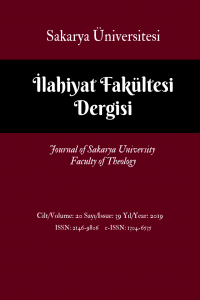Hadislerin Tercüme ve Yorumunda Dikkat Edilmesi Gereken Esaslar ve Sık Rastlanan Hatalar
Some Guidelines for Translating and Interpreting the Ḥadīths and Frequently Encountered Mistakes
Author(s): Mehmet Ali ÇalganSubject(s): Islam studies
Published by: Sakarya üniversitesi
Keywords: Ḥadīth; Translation; Meaning; Interpretation;
Summary/Abstract: The first step to benefit from ḥadīth for those whose native language is not Arabic is translations. All interpretations and results derived from the mistakes done at this step will inevitably be false. The ḥadīth translations that proceed with great speed nowadays leave very few books not translated; however, the quality of these translations needs a serious research. The translation of a ḥadīth is at the same time transmission of its meaning therefore any unintented mistake as a result of lack of attention will result in attributing a sentence to the Prophet (pbuh) which is in fact not His words. Some erroneous translations even make ḥadīth open to discussion and negatively affect the credibility of ḥadīth. In this study, 70.000 ḥadīth in important ḥadīth books including Jāmiʿ al-uṣūl, al-Kutub al-tisʿa, Majma’ al-zawāʾid, al-Jāmi’ al-ṣaġīr and other books and articles have been studied and over 2000 translation mistakes have been detected. 71 mistakes have been selected from these mistakes for this article. 61 of them are in al-Kutub al-tisʿa whereas 29 of them are in Ṣaḥīḥayn. The meaning of 66 ḥadīth has changed due to translation mistakes. The meaning has been reversed in 27 ḥadīth and the meaning in 9 ḥadīth changed such that it became opposite of the teachings of Islam. In this article, the types and nature of these mistakes have been analysed under 22 titles and guidelines have been set forth for a correct translation.
Journal: Sakarya Üniversitesi İlahiyat Fakültesi Dergisi (SAUIFD)
- Issue Year: 21/2019
- Issue No: 40
- Page Range: 517-551
- Page Count: 35
- Language: Turkish

